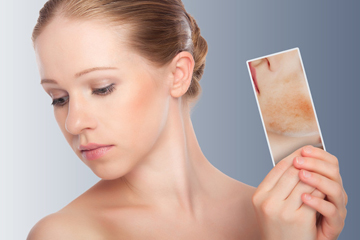As you enjoy the outdoors in summer, you should know that it is also the prime season for skin rashes. More time outdoors means increased exposure to heat, bugs, and other irritants that can irritate your skin and cause rashes. Here are six rashes you should watch out for in summer and tips for fast relief as well as for prevention of these skin problems.

- Plant-related rashes: Many people develop an intensely itchy rash when they come into contact with plants that contain an allergy-causing substance called urushiol. Urushiol is mainly found in poison ivy, oak and sumac. When you touch any of these plants directly, the oil can get onto your skin and if you are allergic to it, you are likely to develop an red, itchy, blistering, oozing rash two to ten days later. Even though the rash is not contagious, you may feel like its spreading.
As a prevention tip, learn what these plants look like and avoid them. The oil from these plants is stronger for 30 to 60 minutes after contact, so if you have come in contact with these plants, carefully remove and wash your clothing. Rinse the exposed skin with soap and water within 15 minutes of contact to avoid catching a rash. See a doctor if your rash is severe or your eyes, face, or genitals are affected. - Tinea Versicolor: Sweat a lot is common in summer, and can this can cause overgrowth of a particular yeast found in the skin of the face, neck, chest and back. This overgrowth of this particular fungus can cause a rash called tinea versicolor, which appears as brown or white patches that grow slowly.
To avoid this skin rash, keep your skin clean and dry and avoid application of heavy lotion. People who are prone to this condition can use antifungal shampoo or cream to prevent occurrence. - Prickly heat: Prickly heat is harmless, but can be a very itchy skin rash. It usually appears as small red spots in places where sweat collects, such as the armpits, back, under the breasts, chest, and so on. This rash appears when the ducts that carry sweat to the skin get inflamed.
The best remedy to deal for prickly heat is to let your skin breathe by wearing loose clothing and keeping your skin dry and cool. For immediate relief, try cool compresses or an over-the-counter hydrocortisone cream. Seek medical treatment if the rash gets infected. - Sun allergy or photosensitivities: You can develop hives or an allergic skin reaction when you are in the sun if you take certain medications and have sun sensitivity (genetically). Sometimes the immune system mistakenly attacks as “foreign” components of skin that have been damaged by sun exposure. The rash appears red and scaly, and is sometimes accompanied by tiny water blisters.
Protect your skin from the sun by wearing sun-protective clothes and applying sunscreen that offers broad-spectrum protection, water resistance, and an SPF of 30 or more. - Swimmer’s itch: Swimmers itch or clam diggers itch appears after wading or swimming in lakes, oceans, and other bodies of water. Swimming in contaminated water can expose skin to parasites, often from bird droppings, which then can burrow into your skin, causing inflammation in the areas not covered with clothes or a swimsuit.
Usually, this rash will go away on its own, but its marks or symptoms can last for a week. The rash can occur after swimming in any natural body of water, but is less common in the ocean and running water. Avoid lakes with large bird populations or stagnant shallows, especially after a warm or dry spell. Rinsing off after a swim can help too. - Side effects from medications: Certain medications can make the skin sensitive to sun exposure resulting in immediate sunburn. Stay in the shade, use sunscreen, and consult your doctor to see if a substitute are available for the medication.